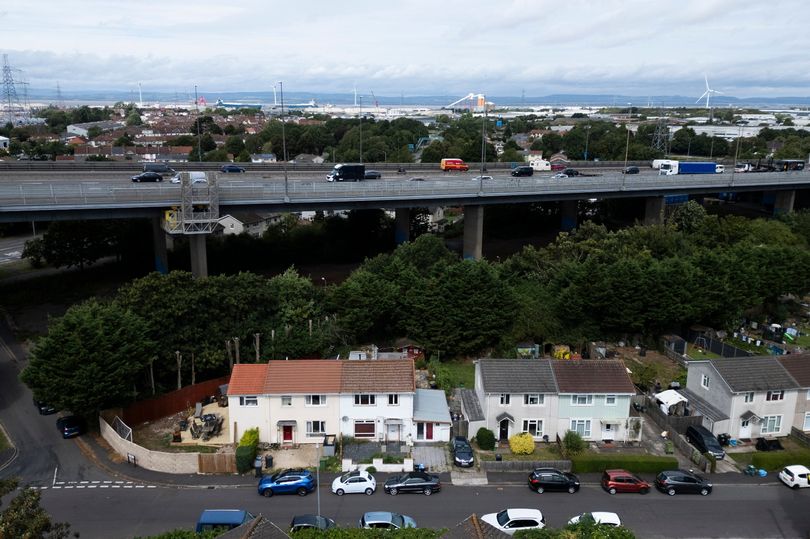Living in the Shadow of the Motorway: Residents Bear the Brunt of Flyover Life

Residents living beneath towering motorway flyovers in Bristol face a daily battle with noise, debris, and an overwhelming sense of intrusion, according to local reports. The relentless hum of traffic, falling objects, and the sheer dominance of the structures have created a unique set of challenges for those who call these areas home.
Jackie Payne, 66, has lived under the M5 in Avonmouth for five years, and her regret is palpable. "We want to move somewhere quieter," she says, highlighting the constant noise that prevents her from enjoying even the simplest pleasures, such as watching television with the windows open. The heat generated by the bridge further exacerbates her discomfort. "I have about six fans in the front room because it gets so hot," she explains, adding that the sound of lorries hitting a specific drain is particularly grating.
Her garden, once a haven, has become a source of stress. "We can't sit in the garden because you can hear the lorries all day - it gets on my nerves," she says, contrasting her current reality with the peaceful sounds of her village upbringing: "I would go out into my garden and all you could hear was the cows mooing." The bridge also blocks sunlight from her front room and attracts litter, adding to her woes. Her safety concerns are heightened by the constant fear of a lorry crashing through the barrier.
Philip Jacobs, 84, a lifelong resident of Avonmouth, has witnessed the M5's construction firsthand. "I was here when it was built. They built it in sections," he reminisces, recalling the disruptive noise during its construction: "I was doing shift work as a lorry driver at the time, often working at night, and the noise was unbelievable - I couldn't get any sleep." While he has adapted to the constant hum of traffic, he acknowledges the bridge's negative impact. "There is a lot of noise, but I have got used to it. The bridge blocks the sun and it's an eyesore," he says, accepting its convenience for motorists.
His neighbour, Joan Seoker, 86, has lived under the bridge for over four decades and seems to have found a degree of acceptance. "We have got double glazing. We don't take any notice of it anymore. We got used to it," she remarks.
However, for others, the impact is more immediate and severe. Kelly, 40, has experienced firsthand the dangers of debris falling from the bridge above. "People throw things from the bridge, which is a problem for the kids. Our conservatory was smashed twice by laughing gas canisters three years ago," she explains.
Tom Benoy, 27, living under the M32 in Eastville, cites the noise as the biggest drawback. "The only thing I don't like is not being able to peacefully sit outside. We have the river, it's a nice area," he says, adding that the constant drone can be both disruptive and surprisingly soothing.
Tahir, 64, a resident for twenty years, has become accustomed to the traffic hum. "Living here for twenty years, I don't have a problem with it," he states, acknowledging the noise, particularly when windows are open. He concludes with a wry observation, "You can't double glaze a garden."
The experiences of these residents highlight the multifaceted challenges of living in close proximity to major motorways. While some have adapted and learned to cope, for others, the noise, debris, and visual intrusion remain constant sources of stress and inconvenience. This underscores the need for a deeper understanding of the impact of such infrastructure on local communities and the importance of mitigating the negative consequences.





